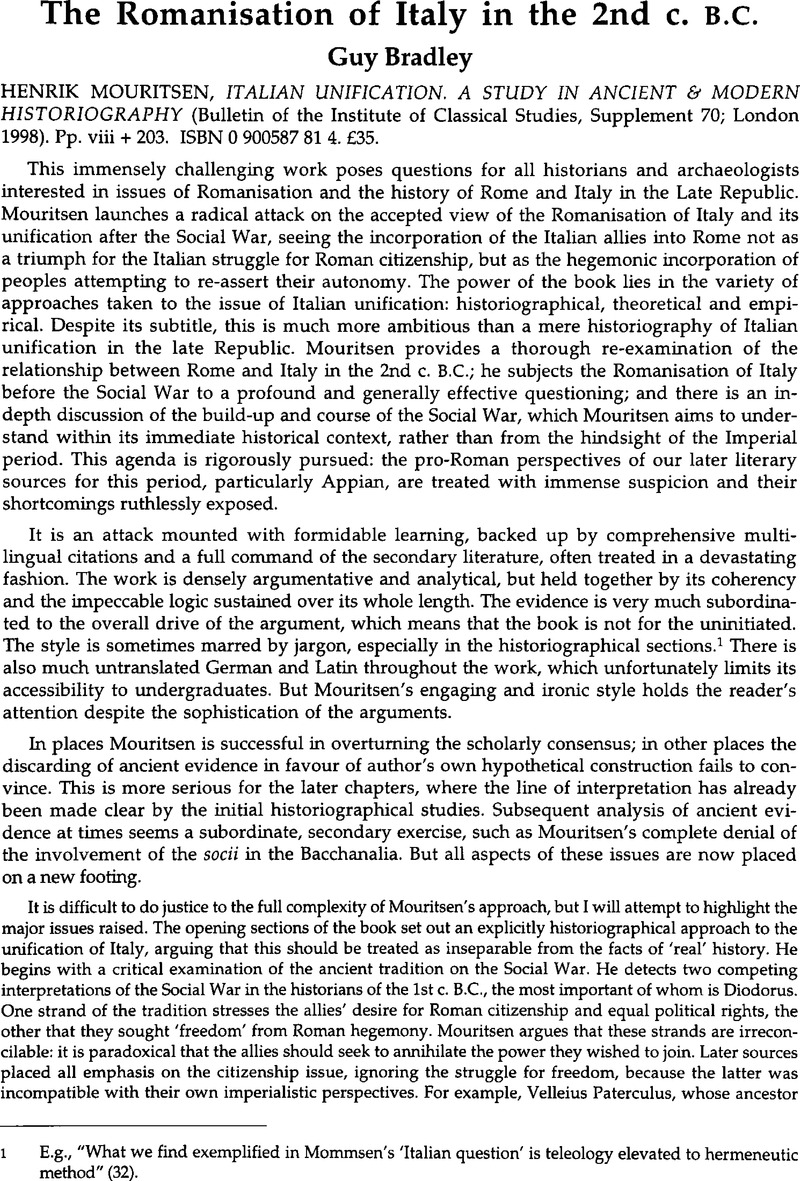No CrossRef data available.
Published online by Cambridge University Press: 16 February 2015

1 E.g., “What we find exemplified in Mommsen's ‘Italian question’ is teleology elevated to hermeneutic method” (32).
2 See, for instance, Keaveney, A., Rome and the unification of Italy (London 1987) chapt. 3.1Google Scholar; Pobjoy, M., “The first Italia,” in Herring, E. and Lomas, K. (edd.), The emergence of state identities in Italy in the first millennium BC (London 2000) 187–211 Google Scholar.
3 E.g., Freeman, P., “Mommsen to Haverfield: the origins of studies of Romanization in late 19th-c. Britain,” in Mattingly, D. J. (ed.), Dialogues in Roman imperialism (JRA Suppl. 23, 1997) 27–50 Google Scholar.
4 Rocca, G., Iscrizioni umbre minori (Florence 1996)Google Scholar.
5 See Terrenato, N., “The Romanization of Italy: global acculturation or cultural bricolage?,” in Forcey, C. et al. (edd.), TRAC 97 (Oxford 1998) 20–27 Google Scholar, and the studies in Keay, S. and Terrenato, N. (edd.), Italy and the West. Comparative issues in Romanization (Oxford 2000)Google Scholar.
6 Laurence, R., The roads of Roman Italy: mobility and cultural change (London 1999)CrossRefGoogle Scholar.
7 R. Witcher, “Globalisation and Roman imperialism. Perspectives on identities in Roman Italy,” in Herring and Lomas (supra n.2) 213-25.
8 Plebs and politics in the Late Roman Republic (Cambridge 2001)Google Scholar.
9 141; cf. Pobjoy (supra n.2) 198-205.
10 P. Brunt, “Italian aims at the time of the Social War,” in id., The fall of the Roman Republic and related essays (Oxford 1988) 128.
11 Brunt (supra n.10) 108-9; Bradley, G., Ancient Umbria (Oxford 2000) 220–21Google Scholar.
12 An assumption I have questioned in “States, cities and tribes in central Italy,” in Herring and Lomas (supra n.2) 109-29.
13 On this general phenomenon see Giardina, A., “L'identità incompiuta dell'Italia romana,” in L'Italie d'Auguste à Dioclétian (CollEFR 198, 1994) 1–89 Google Scholar, a reference I owe to H. Mouritsen.